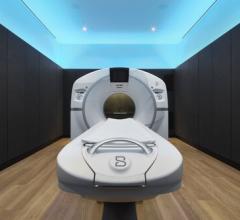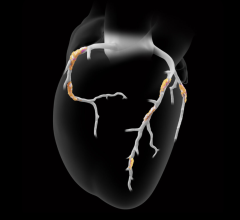
April 18, 2023 — HeartFlow, Inc. announced the launch of the RoadMap analysis, a new AI-enabled product that assists CT readers to accurately*, efficiently, and consistently identify stenoses in the coronary arteries. With its expanded product portfolio, HeartFlow is now the only company to offer anatomical and physiological visualization of the coronary arteries to help improve heart disease diagnosis and enable physicians to guide treatment decisions.
Heart disease is the leading cause of death in the United States.1 Despite advancements in the diagnosis and treatment of coronary artery disease (CAD), the most common heart disease, the complexities of symptoms and the limitations of traditional testing can make it challenging for physicians to correctly identify the condition.
The RoadMap analysis is designed to help improve CAD diagnosis by providing CT readers with a 2D visual that shows the location and severity of anatomic narrowings in the coronary arteries. It has been shown to provide accurate*, reproducible results and helps facilitate standardized and high-quality CT interpretation.2 The RoadMap analysis, alongside HeartFlow’s FFRCT, aligns with the recently updated AHA/ACC chest pain guidelines and enhances existing diagnostic workflows by guiding treatment decisions and improving patient outcomes.3
“As a leader in non-invasive diagnosis of CAD, HeartFlow is intimately familiar with the challenges associated with diagnosing heart disease,” said John Farquhar, Chief Executive Officer of HeartFlow. “The RoadMap analysis underscores our commitment to delivering products that meet the needs of physicians and ultimately helps deliver improved treatment plans for patients with suspected CAD – no matter how their disease may present itself.”
“The RoadMap analysis has already been a valuable tool for our organization in helping us better pinpoint areas of stenosis and its severity,” said Michael Morris, M.D., a Diagnostic Radiology Specialist at Banner Health. “It helps our providers confidently determine the best next steps necessary to achieve improved patient care and outcomes.”
The HeartFlow product suite now enables physicians to gain a more comprehensive understanding of a person’s CAD by assessing the coronary artery anatomy (RoadMap analysis), physiology (HeartFlow FFRCT), and plaque information (Plaque analysis) based on coronary computed tomography angiography (CCTA). When combined, they offer the most accurate approach to predicting the risk of a heart attack.4
*Accuracy data compared to measured QCA angiogram data. Data on file.
For more information: www.heartflow.com
References:
1 Centers for Disease Control and Prevention, National Center for Health Statistics. About Multiple Cause of Death, 1999–2020. CDC WONDER Online Database website. Atlanta, GA: Centers for Disease Control and Prevention; 2022.
2 Khasanova, et al. JCCT 2022.
3 Douglas, et al. The PRECISE Trial. Presented at AHA Scientific Sessions 2022.
4 Lee, et al. JACC Imaging 2019.


 November 18, 2025
November 18, 2025 









